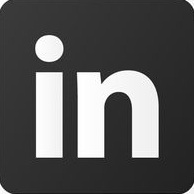Bold, human-first insights that decode work and help you design workplaces that thrive today and into what’s next.
Hybrid Didn’t Break Your Office. Misfit Did.
The debate about home versus office is a distraction. The real question is sharper: Does your workplace fit the work your people are actually doing today?
For most organisations, the answer is no.

Mismatch, Not Hybrid, Is the Issue
The modern knowledge worker spends most of their time in ways that offices were not designed for. I came across Microsoft’s Work Trend Index that shows 70% of employees say they do not have enough focus time. And JLL reports that three out of four leaders admit their workplaces are not supporting deep, individual work.
Meanwhile, hybrid collaboration has become the norm. Six in ten meetings now include at least one virtual participant. Yet many offices still treat video calls as an afterthought.
It is no wonder people compare home to the office and often choose home. The office is not obsolete, it is simply misfit.
What Fit Looks Like Today
A fit-for-purpose workplace is deliberate. It plays to strengths that home, cafés, or co-working spaces cannot match.
- Focus: Protecting attention is harder than ever. I have walked through too many offices where the so-called “quiet room” is a glass box dropped in the middle of open-plan noise.
- Connection: It is not only about space but about rhythm. A Monday kickoff or Friday huddle can matter more than a new lounge area if it becomes a ritual people value.
- Culture: Client spaces should not feel like generic boardrooms. The best ones I have seen are little theatres of brand and credibility.
- Choice: No workplace will ever be perfect. But fit-for-purpose does not mean flawless, it means i-n-t-e-n-t-i-o-n-a-l. Give people meaningful options, and they will make the space work.
This is not about home versus office. It is about building an ecosystem where each setting plays to its strengths.
Why Leaders Struggle to See It
Leaders often assume they know what their workplace supports. They see busy floors, employees feel friction.
I have come across plenty of expensive refurbishments that missed the mark. The desks and the carpet are new, but the daily frustrations remain. Leaders fix what they can see, yet the real friction sits underneath.
- “Noise” might not be acoustic, it might be the endless stream of pings and interruptions.
- “Disconnection” might not be remote work, it might be the absence of meaningful rituals.
- “Loneliness” might not be about home, it might be a culture that does not foster inclusion.
Why It Pays to Close the Gap
Some leaders ask: “What is the ROI of fixing workplace misfit? Is not some inefficiency inevitable?”
The truth is, the cost of misalignment is already on your balance sheet.
- Underused floors that drain real estate budgets.
- Productivity lost to distractions and poor hybrid setups.
- Engagement and retention costs when employees choose anywhere but the office.
Gallup estimates that disengaged employees cost organisations up to 18% of their annual salary in lost productivity. Multiply that across even a fraction of your workforce, and the numbers dwarf the cost of making workplaces fit-for-purpose.
Even a modest lift in focus, connection, and culture delivers returns that far outweigh the cost of redesigning or reallocating space.
The most expensive office is not the one you improve, it is the one that does not deliver.
Measure Before You Design
Closing the gap starts with evidence. Fit-for-purpose is not about square metres or headcounts, it is about whether the environment matches how work really happens.
That means going beyond satisfaction surveys or space counts. It is about mapping the lived reality of how people work, where they hit friction, and what enables them to thrive.
At Work/Shift, we call this the fit-for-purpose gap: the blind spot where leadership assumptions collide with employee reality.
That is why we built CultureFit360™, a diagnostic that acts like a workplace MRI. It scans the intersections of behaviour, culture, space, and technology, and surfaces the hidden frictions that keep workplaces from doing their job.
Because until you measure the misfit, you are only guessing.
The Shared Opportunity
When misfit becomes visible, every stakeholder wins.
- HR sees engagement rise and wellbeing improve.
- CRE/facility management cuts wasted spend and boosts utilisation.
- Designers create spaces that do not just look good, they perform.
- Employees finally feel the workplace working for them.
The office will only thrive if all these perspectives are brought together and aligned.
The Leadership Question
This is not an abstract debate. The decisions leaders make in the next six months will determine whether their offices regain relevance or remain misfit.
“The challenge is not getting people back in. The challenge is: back in for what?”
If the answer is “more of the same,” the office will keep losing ground. If the answer is “a workplace that fits today’s work, culture, and future,” then you have given people a reason to come, and a reason to stay.
Work/Shift Takeaway
Hybrid did not dethrone the office. Misfit did.
And misfit is solvable, once you start decoding it.
If you are shaping your next workplace strategy, now is the moment to ask the harder question: back in for what? Work/Shift can help you decode the answer.
Get Work/Shift Insights direct to your inbox
Subscribe to fresh ideas on workplace design, behaviour, and the future of work.
Use or reproduction without written permission is not permitted.
© 2025 WORKSHIFT COLLECTIVE - All rights reserved - ABN 64 285 893 344

